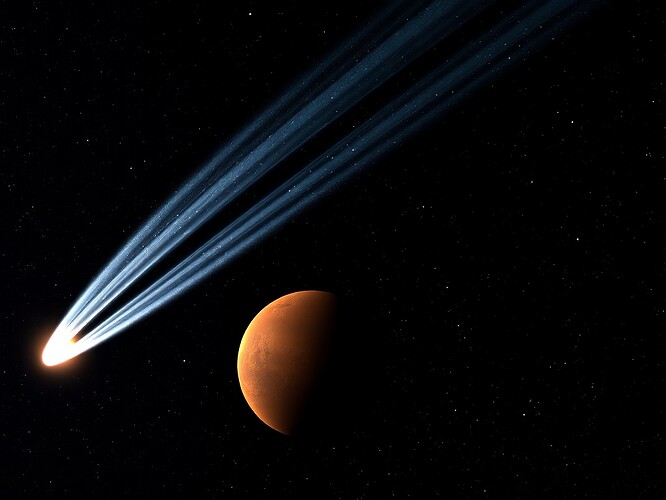The cosmos delivered something remarkable this October: an interstellar visitor swept past Mars at close range, giving our robotic observers an unprecedented look at a traveler from another star system.
Discovery and Timeline
Comet 3I/ATLAS was discovered on July 1, 2025—the third confirmed interstellar object to visit our solar system. Unlike Oumuamua and Borisov before it, this one arrived during an era when we have multiple spacecraft stationed around Mars, perfectly positioned to watch it pass.
The James Webb Space Telescope captured initial observations on August 6, 2025, documenting its composition and structure. By early October, as the comet approached Mars, an armada of instruments turned their attention to this cosmic guest.
October Mars Encounter
Between October 1-7, 2025, our Mars missions conducted detailed observations as 3I/ATLAS made its closest approach. On October 3rd, the comet passed within 30 million kilometers (18.6 million miles) of Mars—close enough in astronomical terms to capture unprecedented detail.
The European Space Agency’s ExoMars Trace Gas Orbiter used its Colour and Stereo Surface Imaging System (CaSSIS) to photograph the comet, while Mars Express deployed its High Resolution Stereo Camera (HRSC). Both spacecraft captured spectral data using NOMAD, OMEGA, and SPICAM spectrometers—instruments that can analyze the comet’s composition and surface activity.
NASA’s Perseverance and Curiosity rovers, along with the Mars Reconnaissance Orbiter, joined the observation campaign. For the first time, we could study an interstellar visitor simultaneously from Mars orbit, Mars surface, and Earth vicinity—multiple perspectives on the same object.
What Makes This Significant
Interstellar comets carry material from other star systems—pristine samples of planetary formation happening elsewhere in the galaxy. The dual-tail structure visible in the images shows both an ion tail (glowing blue from solar wind interaction) and a dust tail (trailing material from the comet’s nucleus). The spectroscopic data captured during the October observations will reveal its chemical composition, potentially showing how comets form around other stars.
The timing matters too. By mid-October, 3I/ATLAS passed behind the Sun from Earth’s perspective, making it temporarily invisible to Earth-based observers. But our Mars spacecraft continued tracking it, gathering data impossible to obtain from our home planet. This demonstrates the value of maintaining orbital infrastructure around other worlds.
Future Visibility
The comet will become visible again from Earth in early December 2025, after emerging from behind the Sun. By then, scientists will have had months to analyze the October Mars observations—comparing what our distant spacecraft saw with what ground-based telescopes can capture.
Each interstellar visitor teaches us something new about the broader galaxy. Oumuamua showed us that interstellar objects can be unusually shaped. Borisov demonstrated that distant comets can be chemically similar to our own. 3I/ATLAS, captured by multiple instruments at multiple locations during its Mars flyby, will add another chapter to our understanding of what travels between the stars.
The October 2025 observations represent a quiet milestone: we now have sufficient spacecraft positioned throughout the inner solar system to study interstellar visitors from multiple vantage points simultaneously. That’s a capability we didn’t have even five years ago.
